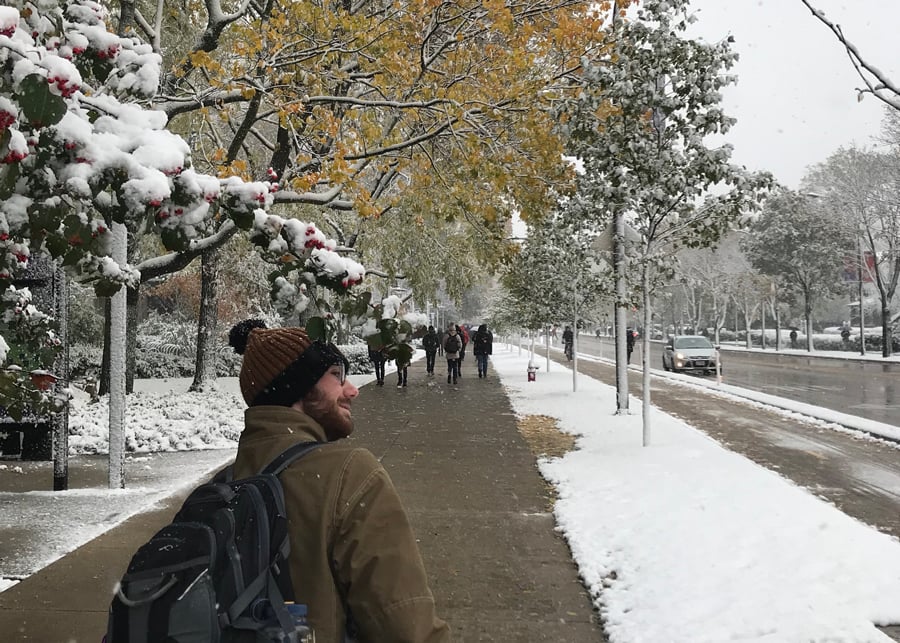Evanston sees mild winter — so far — in stark contrast to last year
Maia Spoto/The Daily Northwestern
Northwestern University in the winter. Last year, the university canceled classes after the polar vortex descended over Chicago and brought near record-breaking temperatures.
February 4, 2020
This winter is going easy on Evanston — at least so far. Temperatures and snowfalls have been much less harsh compared to last winter’s polar vortex.
The polar vortex hit the city in late January 2019, and the temperature fell to near 20 degrees below zero at points. However, one year later, residents, students and visitors enjoyed weather above thirty degrees.
“It is a consistent winter, where it has been in the thirties, a lot less snow,” said Evanston resident Mike Winchester.
Larry Mowry, a meteorologist from ABC 7, confirmed that this January has been relatively warm compared to past winters. He added that the average January 2020 temperature was six degrees above normal.
Mowry also explained that this rise in average temperature is partly due to the path of the polar jet stream. He said the polar jet stream stayed north of Chicago throughout most of December and January, which kept extremely cold temperatures away.
“At the end of October and early November, that polar jet stream did head to our area,” Mowry said. “That’s one of the reasons why we got the snow around Halloween and pretty cold temperatures in early November.”
Last year, the polar vortex, which usually sits in the Arctic, descended into the Midwest, bringing abnormally cold temperatures. Northwestern canceled a little over one day of class due to the polar vortex in the 2019-2020 school year — just the seventh time the University has ever canceled classes. The most recent closing before 2019 was in 2014.
National Oceanic and Atmospheric Administration data shows warmer winters have also become much more common over the past thirty years across the country. Nationally, twenty-three of the 30 winters prior to 2018 were warmer than average for the 20th century, according to The New York Times, while seven were somewhat cooler.
Even though Communication senior Carly Mazer was warned against going outside, she still decided to venture out with friends for a few minutes and throw a pot of boiling water into the air to watch the water freeze.
This year, while weather has been considerably milder, Mowry said that the rise in temperature is not necessarily direct evidence of climate change. A more direct correlation with climate change can be found in Chicago precipitation, which has trended above normal in recent years and can be indicative of climate change, according to an Environmental Law and Policy Center report.
Michael Tiboris, a global water fellow for The Chicago Council on Global Affairs, told The Daily that Chicago’s sewer system may be overwhelmed by immense precipitation.
“(The infrastructure) can handle a lot of water, but it’s not really designed to handle the high volume all at once,” Tiboris said. “The city has used a tremendous amount of resources in an attempt to mitigate it, but it’s pretty clear it’s not going to be enough. There’s just so much water falling from the sky.”
Email: [email protected]


